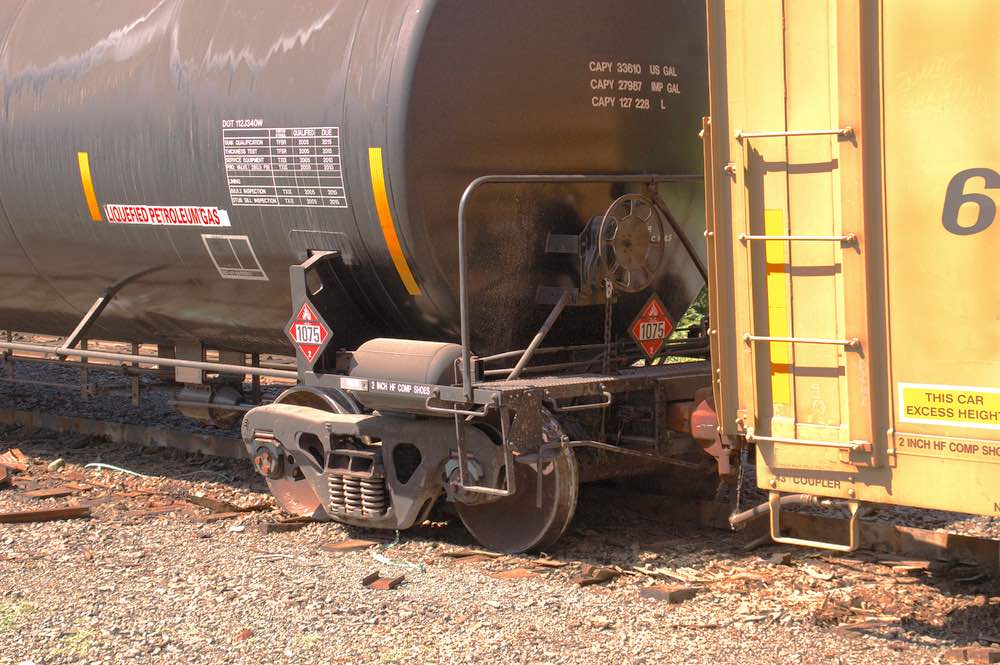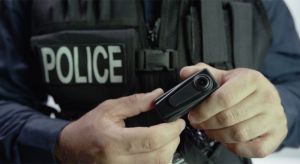There has been a national conversation about the train derailment in East Palestine, Ohio, and the public danger connected to the wreck of 20 tanker cars full of hazardous chemicals.
Columnist Steve Brown interviewed Captain Brian Davis, Emergency Management Director, Fayette County Department of Fire and Emergency Services related to any future train derailment response in Fayette County.
Question 1: Please explain your duties and responsibilities as the county’s Emergency Management Director.
Capt. Davis: Primary responsibilities:
• Maintain emergency management compliance for Fayette County and various municipalities.
• Administer the process for submitting federal and state reimbursement claims for county costs during and after declared disasters.
• Coordinate damage assessments after disasters and prepare reports for elected officials and federal agencies.
• Direct activities of the Fayette County Emergency Operations Center (including readiness, activation, coordination, and supervision)
• Maintain outdoor warning system (35 siren sites)
• Perform community threat/risk assessments
• Maintain county plans including Hazard Mitigation, Continuity of Operations, & Emergency Operations
Question 2: What is the responsibility of local fire departments and the county s Local Emergency Planning Committee (LEPC) in responding to a hazmat train derailment scenario?
Capt. Davis: The LEPC was dissolved in 2016 and the current response model follows the standards outlined within the Incident Command System. The fire department of the Authority Having Jurisdiction (AHJ) will have overall responsibility for the incident and will establish and maintain Incident Command.
All other responding agencies will support the Incident Commander with all aspects of the incident and overall response. The Incident Commander may consider the following hazardous materials strategic goals depending on the severity of the incident:
• Isolation is securing and gaining control of the entire incident scene. Responder safety and public safety are primary concerns. Possible tactical objectives include zoning arrangements, denial of entry, air monitoring, initial evacuation, and withdrawal.
The area of concern around the site of a train derailment is initially at least 500 feet. This may be expanded to 1,000 feet if the incident involves release of a toxic product.
If fire or explosion is involved or a potential threat, the area should be increased, depending upon the product(s) involved. The area of concern may be decreased or increased depending upon actual circumstances and conditions.
• Notification is the process of contacting authorities or resources. Initial notification should be to CSX Transportation to stop any other traffic on the line and to activate the heavy equipment and specialized resources needed for mitigation and recovery. Any affected utilities should be notified to shut off or control gas, electricity, water and sewerage.
Other notifications may include local response teams, mutual aid, regional response organizations, agencies of local and higher government levels, local and area hospitals, hazardous materials contractors, the Red Cross and so forth. It also includes issuing instructions to the public and accurate public information releases.
• Identification is the effort to establish the identity and properties of the product(s) involved or potentially involved in the incident. This includes the name, hazards, physical and chemical properties, container type, and the environment in which the incident has occurred.
Tactical objectives may include reconnaissance, direct observation, and communicating with local or distant resources. Identity of the product can be determined by the consist [a technical term meaning a list of the set of railroad vehicles forming a complete train and their cargo], any visible placards, stencils (reporting mark), labels, other markings, etc.
• Protection is any operation that protects responders and the public. It may include sheltering in place, secondary evacuation, personal and protective chemical equipment, air monitoring, decontamination and medical treatment procedures, zone establishment, rescue efforts, opening of reception centers or shelters, and so forth.
Initial protection operations should always include establishment of zones (initial minimum of 500 feet; 1,000 feet if a toxic spill has occurred or is likely; a half-mile if there is a fire involving most products; and 1 mile if there is a fire involving chlorine or LPG) and air monitoring.
• Spill Control is the process by which the spread of the product through the environment is controlled, limited and/or completely stopped. Tactical objectives may include diking, damming, diverting, retaining, absorbing, adsorbing, neutralizing and/or dispersing.
Spill control is likely to involve quantities of product ranging from 500 gallons to more than 20,000 gallons. Identification of the products is essential before beginning spill control activities.
• Leak Control is the process by which a breach or failure of a container is either directly or indirectly controlled. Tactical objectives may include shutting a remote valve, plugging, patching, diking, overpacking the container, shutting off a valve, or product displacement through offloading and transfer.
The rule of thumb for tank cars is that if you do not know how it operates, do not touch it.
• Fire Control includes all the methods used to minimize the potential impact of a fire that involves or threatens to involve chemicals. Special consideration must be given to the safety of responders, the public, and the environment.
Tactical objectives may include controlled burning, outright extinguishment, protection of exposures, and withdrawal. Identification of the product(s) involved is essential before applying water or other extinguishing agent to a railroad fire. Additionally, fires from burning gases should not be extinguished unless the flow of gas can first be shut off.
• Recovery and Termination include the field and administrative procedures for wrapping up the incident. Recovery may include release of mutual aid units, units at the scene, replenishment of equipment and supplies and cleanup operations. Termination includes documenting information relative to personnel, units, and/or incident operations, and evaluation reports.
Question 3: What is the responsibility of the railroad company in responding to a hazmat train derailment scenario in Fayette County?
Capt. Davis: CSX Transportation owns and operates the rail line that travels through Fayette County, Tyrone, and Peachtree City. They schedule and control rail traffic through their 24-hour Emergency Operations Center in Jacksonville, Florida. CSX has the following additional responsibilities:
• Inspecting and maintaining any placards and/or markings of rail cars carrying hazardous materials.
• Blue Flagging and/or imposing an absolute block on a rail line upon notification and request.
• Providing a train consist. The consist is kept by the Conductor. If the train s crew is incapacitated or the consist is otherwise unavailable, CSX Transportation can electronically transmit copies of the consist if requested by the Incident Commander.
• Working with local Incident Command System and Unified Command for CSX Transportation employees and contractors.
• Providing specialized expertise and equipment as needed to help mitigate incidents. This includes fully trained and qualified individuals to conduct offensive, hands-on, technical response activities, heavy equipment, emergency response (hazmat) contractors with equipment for recovery of spilled products, containers and heavy equipment for recovery of solid material, environmental recovery contractors, and industrial hygiene and public health contractors.
Question 4: Since the railroads no longer label the contents on the outside of the tanker, how do first responders know the contents on the scene of the derailment?
Capt. Davis: The consist provided by the conductor. Stencils, labels, other markings, etc. The shape and design of the rail car can also provide information regarding the contents.
Question 5: Do local fire departments conduct hazmat training exercises with the railroad companies? If yes, how often and what does that training cover?
Capt. Davis: There has not been any collaborative training with CSX in the last few years. However, departmental training is routinely conducted that focuses on responses involving hazardous materials.
We intend to contact CSX to inquire about cooperative training opportunities that are available to public safety agencies within Fayette County.
Question 6: How does the county s phone emergency notification application work?
Capt. Davis: Fayette County does not have a phone emergency notification application.
Fayette County 911 does not have a public notification system.
Fayette County EMA utilized CodeRED until the contract was discontinued in 2018 due to a lack of voluntary enrollment by Fayette County citizens.
Question 7: For businesses and homeowners in the danger zone of a hazmat train derailment, what is the recommendation on how those affected should respond?
Capt. Davis: Shelter-in-place unless an evacuation order is issued. Fayette County would attempt to contact affected residents and businesses by the use of social media, traditional media, and door-to-door notifications. Our partners at the National Weather Service in Peachtree City have the ability to issue an IPAWS (Integrated Public Alert & Warning System) message on our behalf.
Read nearby Steve Brown’s column on the hazards of train derailments facing Peachtree City and Tyrone.










Leave a Comment
You must be logged in to post a comment.